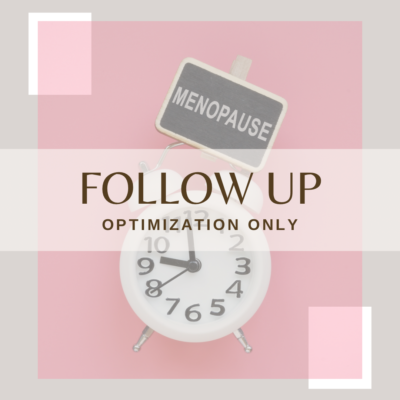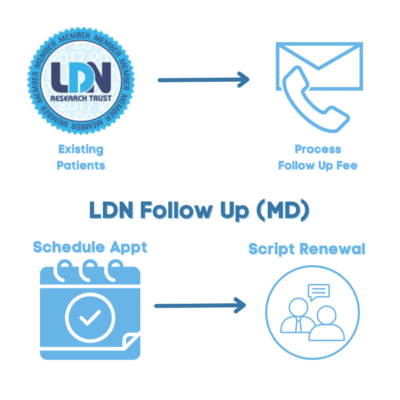
Does LDL particle size matter when it comes to cardiovascular risk? In the case of a more recent study, it would appear that size truly DOES’NT matter (at least when it comes to LDL… But what ACTUALLY predicts heart disease risk and how do we best protect ourselves. The answer might surprise you.
A large prospective cohort analysis, published just last month in the European Heart Journal involving 207,368 UK Biobank participants shows size doesn’t matter. It was a single, detailed analysis of one of the worlds largest datasets. So what does that mean for the Carnivore/Low Carb peeps and the particle size theory?
A follow-up study looked at three major groups: the UK Biobank, Women’s Health Study, and Framingham Heart Study. They compared ApoB levels to the LDL-C/ApoB ratio (basically a stand-in for LDL particle size). They found that ApoB nailed the risk prediction every time and LDL size ratio was useless in 2 out of the 3 groups.
Bottom line, it’s the number of particles (ApoB), not their size, that actually matters.
Many of my low carb/carnivore/keto followers have no doubt heard the saying “Small, dense LDL is dangerous like lightening bolts, but the BIG fluffy LDL is harmless like a cloud”. Heck even I have said this based off early observational studies in the 1990s and early 2000s. The data shows that
- Small LDL particles can penetrate the endothelium more easily
- They’re more susceptible to oxidation, which increases atherosclerotic potential
But now we have new data…When you adjust for total apoB particle count, particle size no longer adds predictive value.
- Every atherogenic particle [LDL, VLDL, IDL, Lp(a)] carries one apoB protein
- That apoB count = the number of atherogenic particles
- It’s the number of particles, not their size, that determines how often they bang into and infiltrate the arterial wall
Essentially if you have a high apoB count you have a higher risk. Did we get it wrong? Personally I think we simplified it to much, not so much wrong as it is incomplete (we missed a huge chunk of the conversation).
What is ApoB?
Apolipoprotein B (ApoB) is a protein found on the surface of all atherogenic (plaque-forming) lipoproteins. Think of it as a name tag or shipping label on dangerous cholesterol-carrying particles.
Each of these particles—LDL, VLDL, IDL, Lp(a), and chylomicron remnants—has one ApoB molecule. So by measuring ApoB, you’re counting how many atherogenic particles are in the bloodstream.
One ApoB = One atherogenic particle
More ApoB = More artery-damaging particles
LDL (Low-Density Lipoprotein) is just one type of particle that carries cholesterol through your blood. LDL particles carry cholesterol to tissues—but when too many are floating around, they can wedge into your artery walls and trigger plaque formation. LDL carries cholesterol, but the LDL-C test (cholesterol content) tells you how much cholesterol is inside all the LDL particles, not how many LDL particles there are. So you could have “normal” LDL-C but still have tons of LDL particles—which is why ApoB is a better predictor of risk.
ApoB vs LDL-C
Say you and I both have 100 mg/dL of LDL-C. But if your LDL-C is packed into 100 particles, and mine is packed into 50, you have twice the particle count = more risk.
- LDL-C = total amount of cholesterol inside LDL particles
- ApoB = total number of atherogenic particles (LDL + others)
Triglycerides are carried by VLDL particles, another ApoB-containing lipoprotein. When triglycerides are high:
- Your liver pumps out more VLDL particles
- These VLDL particles later become small, dense LDL particles
- So higher triglycerides → higher ApoB count → higher risk
That’s why triglycerides are indirectly a marker of risk, especially when paired with low HDL (which we can raise with oral estradiol btw). ApoB tells you the full story.
Speaking of estradiol…
Estradiol > Statins (Especially for Women)
Did you know statins don’t reduce heart disease risk in women the way they do in men.
In primary prevention, their benefit is murky at best, but you know what took 1st place? Estradiol.
Estradiol:
- Lowers LDL
- Drops triglycerides
- Lowers ApoB
- Improves HDL
- Reduces Lp(a) in some studies
- Stabilizes plaque
- Improves endothelial function
- Reverses arterial stiffness
In study after study, estradiol reduces ApoB levels, wis the most accurate way to assess atherogenic particle risk.
Statins lower LDL-C, but they don’t lower ApoB enough.
Lowering cholesterol doesn’t matter unless you’re lowering the right thing.Estradiol lowers what actually causes plaque: ApoB-tagged particles. It not only reduces it, it prevents it!
For women, especially in perimenopause or early menopause, oral estradiol is more than symptom relief-It’s prevention. You won’t get this kind of prevention from a patch though, it’s gotta go through that first pass (liver) metabolism for it to be cardio protective (rather than simply cardio-neutral).
Estradiol isn’t just a hormone. It’s a cardiovascular shield, and in primary prevention, it outperforms statins.
Courtesy Call
Want to know if hormone therapy is the right choice for you? Schedule a courtesy call and find out. A 15 minute call to ask all your HRT/MHT related questions. No BS, No obligation and no misinformation. All evidence based HRT without the half truths we see from other providers.





